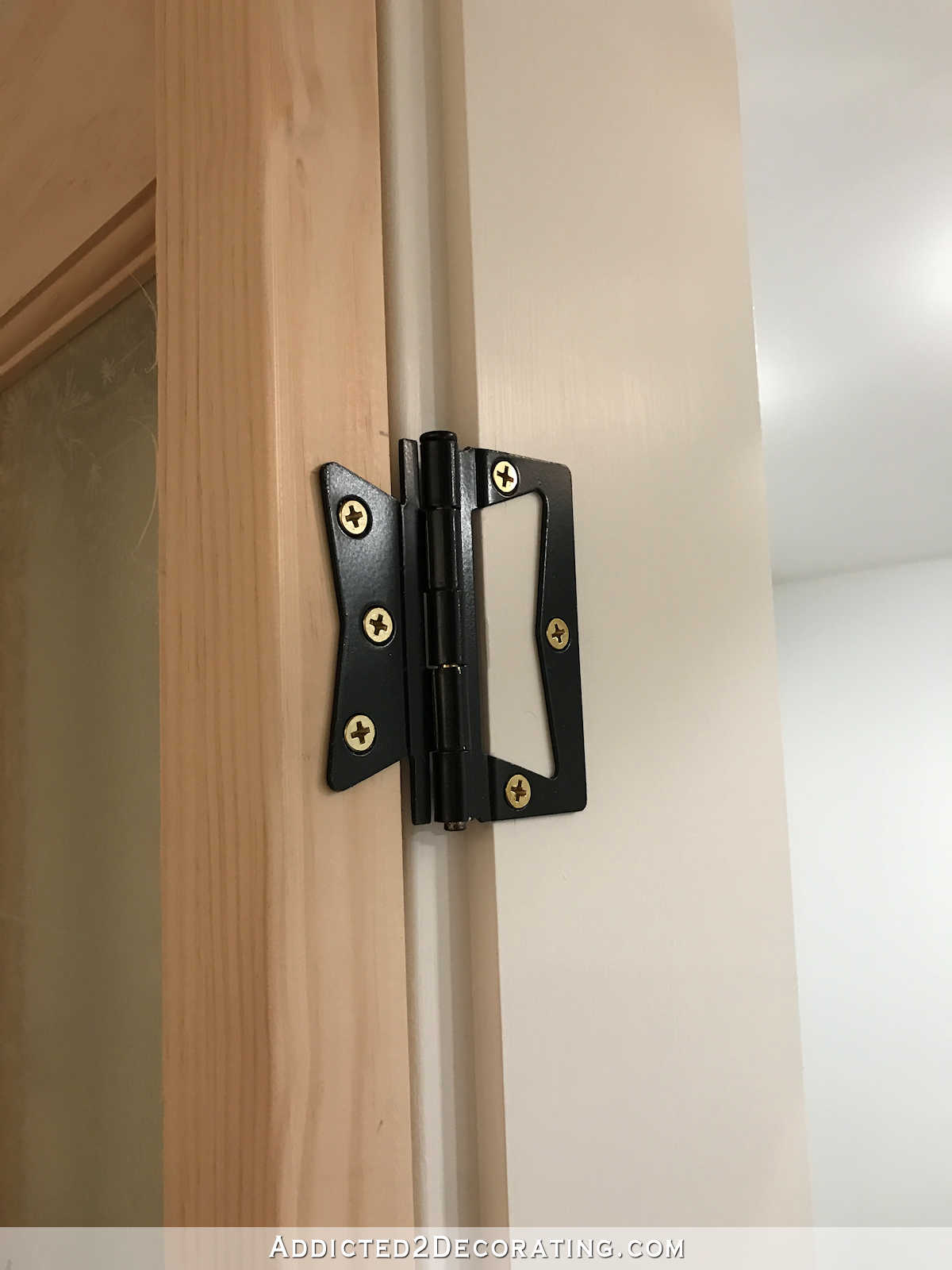
#Installing non mortise hinge install#
Wax the screw threads and install the screws.The hinges include two extra screws, so you can test the fit without worrying about fouling the screw threads or heads. Using the hinges as a guide, drill 5/64” diameter pilot holes for the screws.As long as you don’t get carried away, it doesn’t matter if these mortises are a hair long-the hinges hide them. Each secondary mortise is about 1/4” long, so you can stop routing as soon as the stock covers the bit. In preparation for routing the secondary clearance mortises, raise the bit an additional 1/16”.Because you’re doing climb cuts, take extra care to hold the lid/box tight to the fence and table to make sure the bit doesn’t grab the stock and pull it too quickly or away from the fence. Then, using climb cuts, rout the mortises in the lid’s left side and the box’s right side. Without moving the router table’s fence, move the stop block to the right of the bit.Rout the mortise in the box lid’s right side.Rout a test mortise in a scrap of stock with the same thickness as the box sides.The stop block should be to the left of the bit. Install a 5/16” straight bit in your router table and set the bit height, fence, and stop block to rout a 5/16” wide, 1/8” deep, and 1 7/16” long slot mortise centered in the box side.The general procedure for installing these side rail hinges is: If hinge-related anxiety has kept you away from box-building, put those fears aside, get a set of Highpoint side rail hinges, and continue reading. Best of all, they're relatively easy to install, greatly increasing your chances of producing boxes with smoothly closing, perfectly aligned lids. They're only 5/16" wide, so they can be installed in thin-sided boxes.

They're made of solid brass and have built-in stops that hold the lid open at a 95-degree angle.

These hinges are economical, clean, and classy.
#Installing non mortise hinge how to#
In this article, I'll describe in detail how to install one particular type of hinge: Highpoint side rail hinges. The huge and bewildering number of hinge options can make just selecting a hinge a daunting task. Hinge installation is often the last step in the process, so many woodworkers are understandably anxious about it. As your work on a box progresses, the risks associated with errors increase sharply, and one mistake could mean scrapping the whole thing and starting over. Box-building is rewarding, but nerve-wracking.


 0 kommentar(er)
0 kommentar(er)
